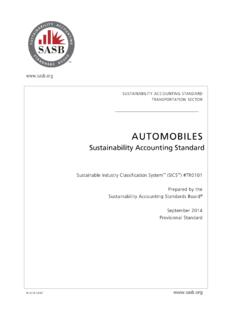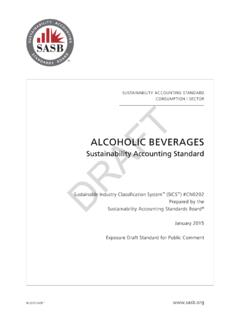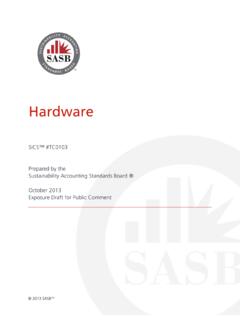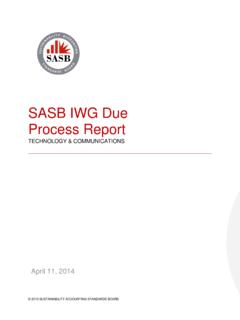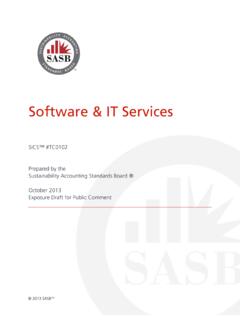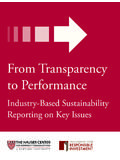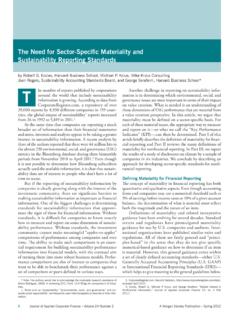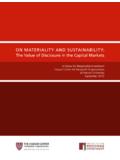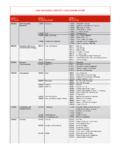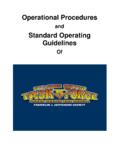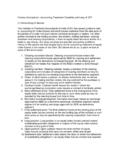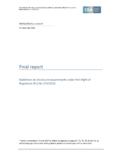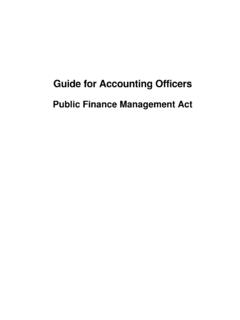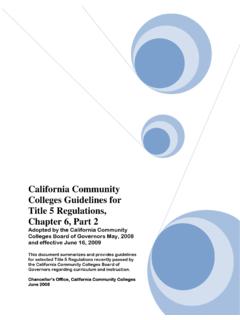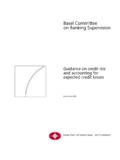Transcription of CONCEPTUAL FRAMEWORK - Sustainability Accounting …
1 CONCEPTUAL FRAMEWORK OF THE Sustainability Accounting STANDARDS BOARD October 2013 CONCEPTUAL FRAMEWORK 2013 Sustainability Accounting STANDARDS BOARD 1 Contents 3 About SASB .. 3 Objectives of Sustainability Accounting and Disclosure .. 3 Purpose of Sustainability Accounting and Disclosure .. 3 Relationship with Financial Accounting .. 3 Users of Sustainability Accounting Standards .. 4 Beneficiary of Sustainability Accounting Standards .. 5 The Reasonable Investor .. 5 Specific Considerations for Institutional Investors -- Fiduciary Duty and Portfolio Risks.
2 5 How Investors Use ESG Data in Financial Analysis .. 5 Key Definitions and Characteristics of Sustainability Accounting and Disclosure .. 7 Sustainability .. 7 Materiality .. 8 Industry Focus .. 9 Decision-usefulness .. 10 Cost-benefit Analysis .. 10 SASB Principles and Criteria .. 11 Methodology for Assessing the Materiality of Sustainability Issues .. 13 Evidence-based Determination of Materiality .. 13 Evidence of Interest .. 14 Evidence of Financial Impact .. 15 Forward-looking Adjustment .. 16 Sustainability Characteristics of Industries.
3 17 Industries with Strong License to Operate .. 17 Use of Common Capitals .. 18 High Costs on Society and Negative Environmental Externalities .. 18 Systemic Sustainability Issues .. 19 Structure of Sustainability Accounting Standards .. 19 Disclosure Guidance .. 19 Accounting Metrics .. 20 Interpretations .. 20 Technical Bulletins .. 20 Implementation .. 20 Standards Development .. 20 Inclusion of Sustainability Accounting Standards in the Form 10-K .. 23 CONCEPTUAL FRAMEWORK 2013 Sustainability Accounting STANDARDS BOARD 2 Management s Discussion and Analysis.
4 23 Other Relevant Sections of Form 10-K .. 23 Auditing .. 24 Adoption .. 24 Updating the Standards .. 24 Harmonization .. 24 SASB s Relationship to ESG Issues of SEC Concern .. 24 Harmonization with other reporting guidelines and frameworks .. 25 SASB and Integrated Reporting .. 25 Appendix I: SEC Disclosure Requirements .. 26 CONCEPTUAL FRAMEWORK 2013 Sustainability Accounting STANDARDS BOARD 3 Introduction This CONCEPTUAL FRAMEWORK sets out the basic concepts and definitions behind SASB s Sustainability Accounting standards (the SASB Standards) and serves as additional guidance for the adoption of the standards by corporations and the use of material Sustainability information by investors.
5 ABOUT SASB The Sustainability Accounting Standards Board (SASB) provides Sustainability Accounting standards for use by publicly-listed corporations in the in disclosing material Sustainability issues for the benefit of investors and the public. SASB standards are designed for disclosure in mandatory filings to the Securities and Exchange Commission (SEC), such as the Form 10-K and 20-F. SASB is an independent 501(c)3 non-profit organization and is accredited to set standards by the American National Standards Institute (ANSI).
6 Objectives of Sustainability Accounting and Disclosure PURPOSE OF Sustainability Accounting AND DISCLOSURE The purpose of Sustainability Accounting is to evaluate the environmental, social and governance performance of companies through an account of their management of various forms of non-financial capital associated with Sustainability environmental, human and social and corporate governance issues, which they rely upon for sustained, long-term value creation1. Ultimately, the goal of Sustainability Accounting and disclosure is to inform development of an integrated business strategy for corporate management and assess Sustainability risks and opportunities inherent to investment decisions.
7 Sustainability Accounting and disclosure is intended as a complement to financial Accounting , such that financial information and Sustainability information can be evaluated side by side and provide a complete view of a corporation s performance and value creation, both financial and non-financial, and across all forms of capital. RELATIONSHIP WITH FINANCIAL Accounting Financial Accounting is concerned with the conceptualization of capital flows, its concrete expression in numbers, as well as budgeting, monitoring, and reporting to the capital The Financial Accounting Standards Board (FASB) and Generally Accepted Accounting Principles (US GAAP) provide a FRAMEWORK for quantifying and reporting, in financial terms, the assets, liabilities, and owners equity ( capital ) of the reporting entity.
8 This capital is the difference between the measured and reported assets and the measured and reported liabilities. Financial Accounting already addresses some elements of non-financial and Sustainability performance. Assets include monetary assets, physical assets (which may include natural assets), and certain intangible assets (some of which may relate to human and social capital). Liabilities include financial liabilities and operating liabilities, some which may relate to environmental or social capitals.
9 1 See Section 2 for SASB s definition of Sustainability 2 International Accounting Standards Board (IASB) (transnational financial standards setting body) CONCEPTUAL FRAMEWORK 2013 Sustainability Accounting STANDARDS BOARD 4 However, Accounting for non-financial assets or performance in financial terms has inherent limitations in the absence of robust markets or proper valuation techniques. Therefore, while environmental and social capitals can be conceptually understood and accounted for in terms of assets and liabilities, they cannot be accurately or adequately priced, either historically or marked to market, which is necessary for a proper financial Accounting treatment.
10 In addition, unlike financial capital, non-financial capitals associated with Sustainability cannot always be reduced to a single fungible unit of measure, like a currency, that can be aggregated and accounted for as assets or liabilities. Therefore SASB s approach to Sustainability Accounting consists in defining metrics or indicators both qualitative and quantitative that express a fair representation or account for company performance on material3 Sustainability topics, and ensure that reasonable investors have access to the "total mix" of information in their decision making process.
